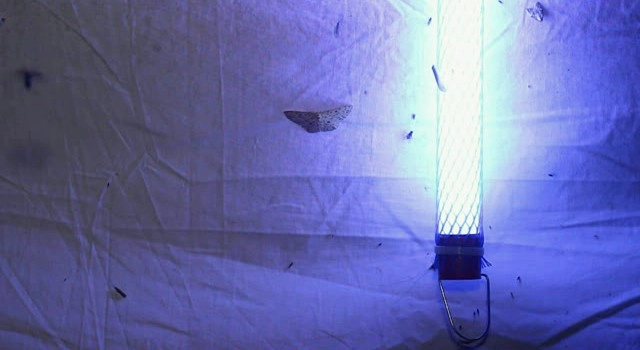Regarding outdoor lighting, one common concern for homeowners is the attraction of bugs and insects. While traditional incandescent and fluorescent lights emit light wavelengths known to attract insects, LED lighting offers a more energy-efficient and bug-resistant alternative. However, not all LED light colors are created equal when deterring bugs. In this article, we’ll explore the science behind insect attraction to light and identify LED light colors that are less likely to attract bugs, helping you create a bug-free outdoor environment.
Understanding Insect Attraction to Light:

- Navigation: Some insects, such as moths and beetles, use natural light sources such as the moon and stars to navigate and orient themselves during nighttime flight. Artificial lights can disrupt this navigation process, causing insects to become disoriented and attracted to the light source.
- Feeding and Reproduction: Certain insects are drawn to light sources because they associate them with potential food sources or mating opportunities. For example, mosquitoes are attracted to the heat and carbon dioxide emitted by warm lights, while some beetles are drawn to UV light wavelengths that resemble those emitted by flowers.
- Escape Behavior: Insects being pursued by predators or seeking refuge from adverse weather conditions may be attracted to light sources as a means of escape or shelter.
The Role of Light Color:
The color spectrum of light plays a significant role in determining its attractiveness to insects. In general, insects are most attracted to light wavelengths in the spectrum’s ultraviolet (UV) and blue regions. At the same time, they are less sensitive to longer wavelengths such as yellow, orange, and red. This sensitivity to specific wavelengths of light is thought to be related to the visual systems of insects and their ability to perceive different colors.
Bug-Resistant LED Light Colors:
- Yellow: Yellow LED lights emit longer wavelengths of light, which are less attractive to insects than shorter wavelengths, such as blue and UV. Yellow lights are often used in bug zappers and insect traps to lure insects away from living spaces. Installing yellow LED lights in outdoor fixtures can help minimize insect attraction while providing warm and inviting illumination.
- Amber: Similar to yellow lights, amber LED lights emit longer wavelengths of light that are less appealing to insects. Amber lights produce a soft, warm glow that adds ambiance to outdoor spaces without attracting bugs. They are ideal for porch lights, pathway lighting, and decorative fixtures.
- Warm White: Warm white LED lights have a color temperature that falls within the yellow-orange range of the spectrum, making them less attractive to insects than more excellent white or blue lights. Warm white lights provide a cozy, inviting illumination that complements outdoor living areas without drawing unwanted bugs.
- Red: Red LED lights emit the longest wavelengths of visible light, which are least attractive to insects. At the same time, red lights may not be suitable for general outdoor lighting due to their limited visibility and aesthetic appeal. However, they can be used strategically in areas where bug attraction is a concern, such as around patios, decks, and outdoor seating areas.
Best Practices for Bug-Free Lighting:
- Use Motion Sensors: Install motion sensor lights that only activate when motion is detected, reducing the time lights are on and potentially attracting bugs.
- Opt for Downward-Facing Fixtures: Choose outdoor light fixtures with downward-facing bulbs to direct light where needed while minimizing light spillage and bug attraction.
- Keep Lights Dimmed: Dim outdoor lights during nighttime hours to reduce their attractiveness to insects while providing sufficient illumination for safety and security.
- Clean Fixtures Regularly: Keep outdoor light fixtures clean and debris-free to prevent the buildup of insect-attracting residues and odors.




